Most of our supermarket purchases are habitual. From a consumer’s point of view, a trip to the grocery store is pretty straightforward. We don’t tend to put a lot of cognitive effort into most of our purchases, and we typically choose the same brands week after week. So to convert potential consumers, supermarkets create dissonance.
Retailers employ different varieties of stimuli (e.g., color, smells, music, etc.) to affect consumer behavior. Color has been considered to be the most salient, resonant and affective feature seen in human vision. It contributes to the appreciation of and preference for products and plays an essential communication role, improves the efficacy of messages and may increase the likelihood of a purchase. The olfactory sense, or the sense of smell, has been the subject of study in several papers published in the marketing field. In an experiment performed exposing individuals to 26 different ambient scents of varying intensity, as well as a neutral control group, subjects in the scented condition perceived that they had spent less time in the store. Those in the no scent condition perceived having spent significantly more time in the store than they actually did (Spangenberg, Crowley, and Henderson, 1996). Surprisingly, whether the scent was pleasing or not had no effect. Neither did intensity. One of the most famous research studies in marketing (Gorn, 1982) used classical conditioning and illustrated that hearing well-liked music versus disliked music, while being exposed to a product, can directly affect product preferences as measured by product choice.
Going back to the supermarket, entryway placement and layout have a significant effect on how people shop and how much they spend. Generally speaking, items with the highest profit margins are placed on shelves that are at shoppers’ eye level. Less profitable brands will be stocked at the top of a shelf or near your feet. Contrary to intuition, shoppers don’t walk up and down aisles. Research of movement patterns using GPS trackers show that people tend to travel in select aisles, using the perimeter of the shop as the main thoroughfare, and rarely in a systematic up and down pattern. People, who do venture into the center of aisles, tend to spend more time in the shop but not necessarily more money. What this means is that key products, ones with the higher profit margins, will typically be placed at the ends of aisles in end cap displays. Familiar household brands will also be placed here to serve as a psychological “welcome mat,” which results in increased traffic.
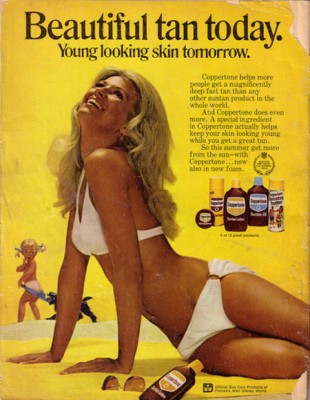 Despite the fact that consumers generally indicate that they make rational purchasing decisions based on considerations like price, selection or convenience, subconscious forces, involving emotion and memories, are clearly also at work. Scientists used to assume that emotion and rationality were opposed to each other, but Antonio Damasio, now professor of neuroscience at the University of Southern California, has found that people who lose the ability to perceive or experience emotions as the result of a brain injury find it hard or impossible to make any decisions at all.
Despite the fact that consumers generally indicate that they make rational purchasing decisions based on considerations like price, selection or convenience, subconscious forces, involving emotion and memories, are clearly also at work. Scientists used to assume that emotion and rationality were opposed to each other, but Antonio Damasio, now professor of neuroscience at the University of Southern California, has found that people who lose the ability to perceive or experience emotions as the result of a brain injury find it hard or impossible to make any decisions at all.
Perception involves the process of categorization and extends to selection and interpretation, as well as gauging risk and opportunity cost(s), to produce meaning. In the process, buyers make use of cues as they’re bombarded with stimulation at all times of the day. However, only parts are successfully transferred and categorized as information. The consumer chooses what information to factor in, as well as what to dismiss. This differentiation between stimulation and information sets a distinction between two types of cues individuals are faced with. A stimulus cue is a conspicuous stimulus somewhere in the sensory field toward which attention can be drawn or directed, whereas an information cue is a bit of information about a marketing stimulus. Not only do advertisers need to draw the attention of consumers, they need to simultaneously argue the case for their product. Between marketing, advertising and design, each discipline recognizes that a psychological component should be taken into consideration at every point of engagement. Behavioral factors are also carefully taken into account because, ultimately, an advertisement isn’t meant to just attract attention, but to actually influence consumers to buy products. Generally speaking, advertising may be one of the most carefully constructed of all human communication as it is certainly one of the most costly.
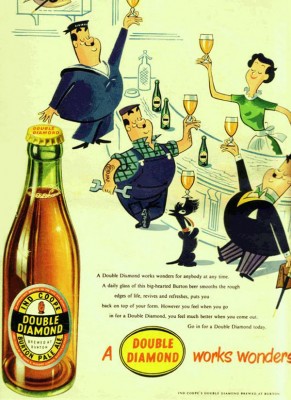 Brand development and maintenance demands a combination of functional, operational and psychological elements to create a unique entity that has a lasting personality, which will build retail brand awareness with existing and potential customers. When a brand has a well-defined personality, consumers interact with it and develop a relationship that can influence individual attitudes and behaviors in terms of how consumers perceive and react to a brand. A successful retail brand will help to build long-term demand, add some perceived value and ultimately improve sales. Consumers will be willing to pay more for a brand if there is added actual, or perceived, value from their experience of using the product or service. Because ultimately, they’re purchasing a total experience consisting not only of the physical item but also the packaging, after sales services, promotions and image.
Brand development and maintenance demands a combination of functional, operational and psychological elements to create a unique entity that has a lasting personality, which will build retail brand awareness with existing and potential customers. When a brand has a well-defined personality, consumers interact with it and develop a relationship that can influence individual attitudes and behaviors in terms of how consumers perceive and react to a brand. A successful retail brand will help to build long-term demand, add some perceived value and ultimately improve sales. Consumers will be willing to pay more for a brand if there is added actual, or perceived, value from their experience of using the product or service. Because ultimately, they’re purchasing a total experience consisting not only of the physical item but also the packaging, after sales services, promotions and image.
Advertising is a ubiquitous and powerful force that lulls consumers into buying wanted, and sometimes unwanted, products that can change lifestyles for better or worse. The impact of advertising is often subtle and implicit but, sometimes, booming and impossible to overlook. Messaging aims to convince, or pair, target audiences with solutions to problems they may, or may not, know they have which may lead to a potential purchase or impulse buy. By and large, studies show that the effectiveness of psychological application will continue to impact advertising in a huge way, both online and off, as methodology is fine-tuned and studies unearth the motivations that compel consumers to make specific purchases.
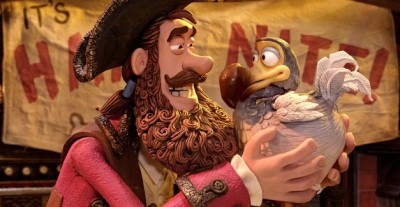 Hugh Grant stars as the ambitious, but equally inexpert, Pirate Captain. With a rag-tag crew of amateur pirates at his side, and seemingly blind to the odds stacked against him, the Captain has one dream: to defeat his rivals, Black Bellamy (Jeremy Piven) and Cutlass Liz (Selma Hayek), and win the Pirate of the Year Award.
Hugh Grant stars as the ambitious, but equally inexpert, Pirate Captain. With a rag-tag crew of amateur pirates at his side, and seemingly blind to the odds stacked against him, the Captain has one dream: to defeat his rivals, Black Bellamy (Jeremy Piven) and Cutlass Liz (Selma Hayek), and win the Pirate of the Year Award.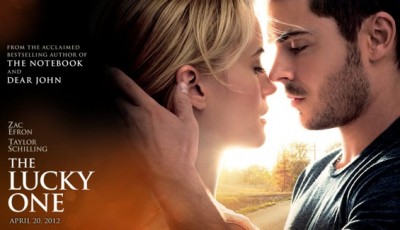 Rating: PG-13
Rating: PG-13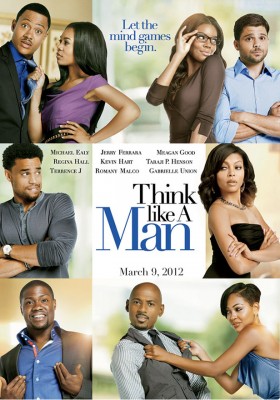 Rating: PG-13
Rating: PG-13 Despite the fact that consumers generally indicate that they make rational purchasing decisions based on considerations like price, selection or convenience, subconscious forces, involving emotion and memories, are clearly also at work. Scientists used to assume that emotion and rationality were opposed to each other, but
Despite the fact that consumers generally indicate that they make rational purchasing decisions based on considerations like price, selection or convenience, subconscious forces, involving emotion and memories, are clearly also at work. Scientists used to assume that emotion and rationality were opposed to each other, but  Brand development and maintenance demands a combination of functional, operational and psychological elements to create a unique entity that has a lasting personality, which will build retail brand awareness with existing and potential customers. When a brand has a well-defined personality, consumers interact with it and develop a relationship that can influence individual attitudes and behaviors in terms of how consumers perceive and react to a brand. A successful retail brand will help to build long-term demand, add some perceived value and ultimately improve sales. Consumers will be willing to pay more for a brand if there is added actual, or perceived, value from their experience of using the product or service. Because ultimately, they’re purchasing a total experience consisting not only of the physical item but also the packaging, after sales services, promotions and image.
Brand development and maintenance demands a combination of functional, operational and psychological elements to create a unique entity that has a lasting personality, which will build retail brand awareness with existing and potential customers. When a brand has a well-defined personality, consumers interact with it and develop a relationship that can influence individual attitudes and behaviors in terms of how consumers perceive and react to a brand. A successful retail brand will help to build long-term demand, add some perceived value and ultimately improve sales. Consumers will be willing to pay more for a brand if there is added actual, or perceived, value from their experience of using the product or service. Because ultimately, they’re purchasing a total experience consisting not only of the physical item but also the packaging, after sales services, promotions and image.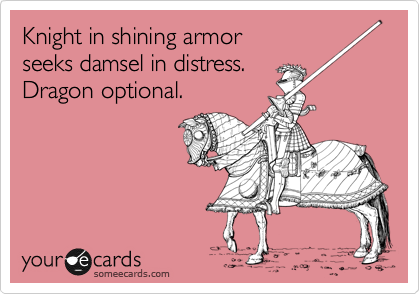 Four beautiful girls set out to revolutionize the grungy, male-dominated environment of the Seven Oaks college campus, that still prevails decades after coeducation’s arrival. The group consists of Violet Wister (Greta Gerwig), the group’s dynamic cardigan-clad leader, Rose (Megalyn Echikunwoke), Heather (Carrie MacLemore) and Lily (Analeigh Tipton). Their principal mission is the Suicide Prevention Center where with coffee, doughnuts and dancing lessons, they hope to curb severe depression, bad outfits and general despair. Violet, the group’s ringleader summarizes it best when she explains to Lily, “Have you ever heard the expression, ‘Prevention is 9/10ths the cure?’ Well, in the case of suicide, it’s actually 10/10ths.” As the story progresses, the girls become romantically entangled with a series of men; including, Charlie (Adam Brody), Xavier (Hugo Becker), Frank (Ryan Metcalf) and Thor (Billy Magnussen) who threaten the girls’ friendship and sanity.
Four beautiful girls set out to revolutionize the grungy, male-dominated environment of the Seven Oaks college campus, that still prevails decades after coeducation’s arrival. The group consists of Violet Wister (Greta Gerwig), the group’s dynamic cardigan-clad leader, Rose (Megalyn Echikunwoke), Heather (Carrie MacLemore) and Lily (Analeigh Tipton). Their principal mission is the Suicide Prevention Center where with coffee, doughnuts and dancing lessons, they hope to curb severe depression, bad outfits and general despair. Violet, the group’s ringleader summarizes it best when she explains to Lily, “Have you ever heard the expression, ‘Prevention is 9/10ths the cure?’ Well, in the case of suicide, it’s actually 10/10ths.” As the story progresses, the girls become romantically entangled with a series of men; including, Charlie (Adam Brody), Xavier (Hugo Becker), Frank (Ryan Metcalf) and Thor (Billy Magnussen) who threaten the girls’ friendship and sanity.